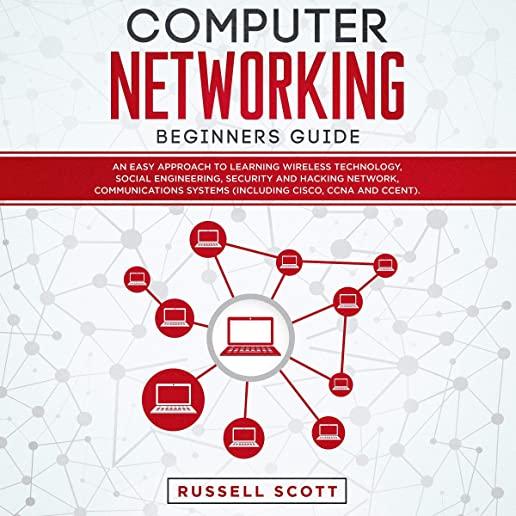Module 1: Introduction to Microsoft SQL Server 2016
This module introduces SQL Server, the versions of SQL Server, including cloud versions, and how to connect to SQL Server using SQL Server Management Studio.
Lessons
-
The Basic Architecture of SQL Server
-
SQL Server Editions and Versions
-
Getting Started with SQL Server Management Studio
Lab: Working with SQL Server 2016 Tools
-
Working with SQL Server Management Studio
-
Creating and Organizing T-SQL Scripts
-
Using Books Online
After completing this module, you will be able to:
-
Describe relational databases and Transact-SQL queries.
-
Describe the on-premise and cloud-based editions and versions of SQL Server.
-
Describe how to use SQL Server Management Studio (SSMS) to connect to an instance of SQL Server, explore the databases contained in the instance, and work with script files that contain T-SQL queries.
Module 2: Introduction to T-SQL Querying
This module describes the elements of T-SQL and their role in writing queries. Describe the use of sets in SQL Server. Describe the use of predicate logic in SQL Server. Describe the logical order of operations in SELECT statements.
Lessons
-
Introducing T-SQL
-
Understanding Sets
-
Understanding Predicate Logic
-
Understanding the Logical Order of Operations in SELECT statements
Lab: Introduction to T-SQL Querying
-
Executing Basic SELECT Statements
-
Executing Queries that Filter Data using Predicates
-
Executing Queries That Sort Data Using ORDER BY
After completing this module, you will be able to:
-
Describe the role of T-SQL in writing SELECT statements.
-
Describe the elements of the T-SQL language and which elements will be useful in writing queries.
-
Describe the concepts of the set theory, one of the mathematical underpinnings of relational databases, and to help you apply it to how you think about querying SQL Server
-
Describe predicate logic and examine its application to querying SQL Server.
-
Explain the elements of a SELECT statement, delineate the order in which the elements are evaluated, and then apply this understanding to a practical approach to writing queries.
Module 3: Writing SELECT Queries
This module introduces the fundamentals of the SELECT statement, focusing on queries against a single table.
Lessons
-
Writing Simple SELECT Statements
-
Eliminating Duplicates with DISTINCT
-
Using Column and Table Aliases
-
Writing Simple CASE Expressions
Lab: Writing Basic SELECT Statements
-
Writing Simple SELECT Statements
-
Eliminating Duplicates Using DISTINCT
-
Using Column and Table Aliases
-
Using a Simple CASE Expression
After completing this module, you will be able to:
-
Describe the structure and format of the SELECT statement, as well as enhancements that will add functionality and readability to your queries
-
Describe how to eliminate duplicates using the DISTINCT clause
-
Describe the use of column and table aliases
-
Understand and use CASE expressions
Module 4: Querying Multiple Tables
This module describes how to write queries that combine data from multiple sources in Microsoft SQL Server 2016.
Lessons
-
Understanding Joins
-
Querying with Inner Joins
-
Querying with Outer Joins
-
Querying with Cross Joins and Self Joins
Lab: Querying Multiple Tables
-
Writing Queries that use Inner Joins
-
Writing Queries that use Multiple-Table Inner Joins
-
Writing Queries that use Self-Joins
-
Writing Queries that use Outer Joins
-
Writing Queries that use Cross Joins
After completing this module, you will be able to:
-
Explain the fundamentals of joins in SQL Server 2016
-
Write inner join queries
-
Write queries that use outer joins
-
Use additional join types
Module 5: Sorting and Filtering Data
This module describes how to implement sorting and filtering.
Lessons
-
Sorting Data
-
Filtering Data with Predicates
-
Filtering Data with TOP and OFFSET-FETCH
-
Working with Unknown Values
Lab: Sorting and Filtering Data
-
Writing Queries that Filter Data using a WHERE Clause
-
Writing Queries that Sort Data Using an ORDER BY Clause
-
Writing Queries that Filter Data Using the TOP Option
After completing this module, you will be able to:
-
Explain how to add an ORDER BY clause to your queries to control the order of rows displayed in your query’s output
-
Explain how to construct WHERE clauses to filter out rows that do not match the predicate.
-
Explain how to limit ranges of rows in the SELECT clause using a TOP option.
-
Explain how to limit ranges of rows using the OFFSET-FETCH option of an ORDER BY clause.
-
Explain how three-valued logic accounts for unknown and missing values, how SQL Server uses NULL to mark missing values, and how to test for NULL in your queries.
Module 6: Working with SQL Server 2016 Data Types
This module introduces the data types SQL Server uses to store data.
Lessons
-
Introducing SQL Server 2016 Data Types
-
Working with Character Data
-
Working with Date and Time Data
Lab: Working with SQL Server 2016 Data Types
-
Writing Queries that Return Date and Time Data
-
Writing Queries that use Date and Time Functions
-
Writing Queries That Return Character Data
-
Writing Queries That Return Character Functions
After completing this module, you will be able to:
-
Explore many of the data types SQL Server uses to store data and how data types are converted between types
-
Explain the SQL Server character-based data types, how character comparisons work, and some common functions you may find useful in your queries
-
Describe data types that are used to store temporal data, how to enter dates and times so they will be properly parsed by SQL Server, and how to manipulate dates and times with built-in functions.
Module 7: Using DML to Modify Data
This module describes how to create DML queries, and why you would want to.
Lessons
-
Inserting Data
-
Modifying and Deleting Data
Lab: Using DML to Modify Data
-
Inserting Data
-
Updating and Deleting Data
After completing this module, you will be able to:
-
Use INSERT and SELECT INTO statements
-
Use UPDATE, MERGE, DELETE, and TRUNCATE.
Module 8: Using Built-In Functions
This module introduces some of the many built in functions in SQL Server 2016.
Lessons
-
Writing Queries with Built-In Functions
-
Using Conversion Functions
-
Using Logical Functions
-
Using Functions to Work with NULL
Lab: Using Built-In Functions
-
Writing Queries That Use Conversion Functions
-
Writing Queries that use Logical Functions
-
Writing Queries that Test for Nullability
After completing this module, you will be able to:
-
Describe the types of functions provided by SQL Server, and then focus on working with scalar functions
-
Explain how to explicitly convert data between types using several SQL Server functions
-
Describe how to use logical functions that evaluate an expression and return a scalar result.
-
Describe additional functions for working with NULL
Module 9: Grouping and Aggregating Data
This module describes how to use aggregate functions.
Lessons
-
Using Aggregate Functions
-
Using the GROUP BY Clause
-
Filtering Groups with HAVING
Lab: Grouping and Aggregating Data
-
Writing Queries That Use the GROUP BY Clause
-
Writing Queries that Use Aggregate Functions
-
Writing Queries that Use Distinct Aggregate Functions
-
Writing Queries that Filter Groups with the HAVING Clause
After completing this module, you will be able to:
-
Describe the built-in aggregate function in SQL Server and write queries using it.
-
Write queries that separate rows using the GROUP BY clause.
-
Write queries that use the HAVING clause to filter groups.
Module 10: Using Subqueries
This module describes several types of subquery and how and when to use them.
Lessons
-
Writing Self-Contained Subqueries
-
Writing Correlated Subqueries
-
Using the EXISTS Predicate with Subqueries
Lab: Using Subqueries
-
Writing Queries That Use Self-Contained Subqueries
-
Writing Queries That Use Scalar and Multi-Result Subqueries
-
Writing Queries That Use Correlated Subqueries and an EXISTS Clause
After completing this module, you will be able to:
-
Describe where subqueries may be used in a SELECT statement.
-
Write queries that use correlated subqueries in a SELECT statement
-
Write queries that use EXISTS predicates in a WHERE clause to test for the existence of qualifying rows
-
Use the EXISTS predicate to efficiently check for the existence of rows in a subquery.
Module 11: Using Table Expressions
Previously in this course, you learned about using subqueries as an expression that returned results to an outer calling query. Like subqueries, table expressions are query expressions, but table expressions extend this idea by allowing you to name them and to work with their results as you would work with data in any valid relational table. Microsoft SQL Server 2016 supports four types of table expressions: derived tables, common table expression (CTEs), views, and inline table-valued functions (TVFs). In this module, you will learn to work with these forms of table expressions and learn how to use them to help create a modular approach to writing queries.
Lessons
-
Using Views
-
Using Inline Table-Valued Functions
-
Using Derived Tables
-
Using Common Table Expressions
Lab: Using Table Expressions
-
Writing Queries That Use Views
-
Writing Queries That Use Derived Tables
-
Writing Queries That Use Common Table Expressions (CTEs)
-
Writing Queries That Sue Inline Table-Valued Expressions
After completing this module, you will be able to:
-
Write queries that return results from views.
-
Use the CREATE FUNCTION statement to create simple inline TVFs.
-
Write queries that create and retrieve results from derived tables.
-
Write queries that create CTEs and return results from the table expression.
Module 12: Using Set Operators
This module introduces how to use the set operators UNION, INTERSECT, and EXCEPT to compare rows between two input sets.
Lessons
-
Writing Queries with the UNION operator
-
Using EXCEPT and INTERSECT
-
Using APPLY
Lab: Using Set Operators
-
Writing Queries That Use UNION Set Operators and UNION ALL
-
Writing Queries That Use CROSS APPLY and OUTER APPLY Operators
-
Writing Queries That Use the EXCEPT and INTERSECT Operators
After completing this module, students will be able to:
-
Write queries that use UNION to combine input sets.
-
Write queries that use UNION ALL to combine input sets
-
Write queries that use the EXCEPT operator to return only rows in one set but not another.
-
Write queries that use the INTERSECT operator to return only rows that are present in both sets
-
Write queries using the CROSS APPLY operator.
-
Write queries using the OUTER APPLY operator
Module 13: Using Windows Ranking, Offset, and Aggregate Functions
This module describes the benefits to using window functions. Restrict window functions to rows defined in an OVER clause, including partitions and frames. Write queries that use window functions to operate on a window of rows and return ranking, aggregation, and offset comparison results.
Lessons
-
Creating Windows with OVER
-
Exploring Window Functions
Lab: Using Windows Ranking, Offset, and Aggregate Functions
-
Writing Queries that use Ranking Functions
-
Writing Queries that use Offset Functions
-
Writing Queries that use Window Aggregate Functions
After completing this module, students will be able to:
-
Describe the T-SQL components used to define windows, and the relationships between them.
-
Write queries that use the OVER clause, with partitioning, ordering, and framing to define windows
-
Write queries that use window aggregate functions.
-
Write queries that use window ranking functions.
-
Write queries that use window offset functions
Module 14: Pivoting and Grouping Sets
This module describes write queries that pivot and unpivot result sets. Write queries that specify multiple groupings with grouping sets
Lessons
-
Writing Queries with PIVOT and UNPIVOT
-
Working with Grouping Sets
Lab: Pivoting and Grouping Sets
-
Writing Queries that use the PIVOT Operator
-
Writing Queries that use the UNPIVOT Operator
-
Writing Queries that use the GROUPING SETS CUBE and ROLLUP Subclauses
After completing this module, students will be able to:
-
Describe how pivoting data can be used in T-SQL queries.
-
Write queries that pivot data from rows to columns using the PIVOT operator.
-
Write queries that unpivot data from columns back to rows using the UNPIVOT operator.
-
Write queries using the GROUPING SETS subclause.
-
Write queries that use ROLLUP AND CUBE.
-
Write queries that use the GROUPING_ID function.
Module 15: Executing Stored Procedures
This module describes how to return results by executing stored procedures. Pass parameters to procedures. Create simple stored procedures that encapsulate a SELECT statement. Construct and execute dynamic SQL with EXEC and sp_executesql.
Lessons
-
Querying Data with Stored Procedures
-
Passing Parameters to Stored procedures
-
Creating Simple Stored Procedures
-
Working with Dynamic SQL
Lab: Executing Stored Procedures
-
Using the EXECUTE statement to Invoke Stored Procedures
-
Passing Parameters to Stored procedures
-
Executing System Stored Procedures
After completing this module, students will be able to:
-
Describe stored procedures and their use.
-
Write T-SQL statements that execute stored procedures to return data.
-
Write EXECUTE statements that pass input parameters to stored procedures.
-
Write T-SQL batches that prepare output parameters and execute stored procedures.
-
Use the CREATE PROCEDURE statement to write a stored procedure.
-
Create a stored procedure that accepts input parameters.
-
Describe how T-SQL can be dynamically constructed.
-
Write queries that use dynamic SQL.
Module 16: Programming with T-SQL
-
This module describes how to enhance your T-SQL code with programming elements.
-
Lessons
-
T-SQL Programming Elements
-
Controlling Program Flow
Lab: Programming with T-SQL
-
Declaring Variables and Delimiting Batches
-
Using Control-Of-Flow Elements
-
Using Variables in a Dynamic SQL Statement
-
Using Synonyms
After completing this module, students will be able to:
-
Describe how Microsoft SQL Server treats collections of statements as batches.
-
Create and submit batches of T-SQL code for execution by SQL Server.
-
Describe how SQL Server stores temporary objects as variables.
-
Write code that declares and assigns variables.
-
Create and invoke synonyms
-
Describe the control-of-flow elements in T-SQL.
-
Write T-SQL code using IF…ELSE blocks.
-
Write T-SQL code that uses WHILE.
Module 17: Implementing Error Handling
This module introduces error handling for T-SQL
Lessons
-
Implementing T-SQL error handling
-
Implementing structured exception handling
Lab: Implementing Error Handling
-
Redirecting errors with TRY/CATCH
-
Using THROW to pass an error message back to a client
After completing this module, students will be able to:
-
Implement T-SQL error handling.
-
Implement structured exception handling.
Module 18: Implementing Transactions
This module describes how to implement transactions.
Lessons
-
Transactions and the database engines
-
Controlling transaction
Lab: Implementing Transactions
-
Controlling transactions with BEGIN, COMMIT, and ROLLBACK
-
Adding error handling to a CATCH block
After completing this module, students will be able to:
-
Describe transactions and the differences between batches and transactions.
-
Describe batches and how they are handled by SQL Server.
-
Create and manage transactions with transaction control language (TCL) statements.
-
Use SET XACT_ABORT to define SQL Servers handling of transactions outside TRY/CATCH blocks.






